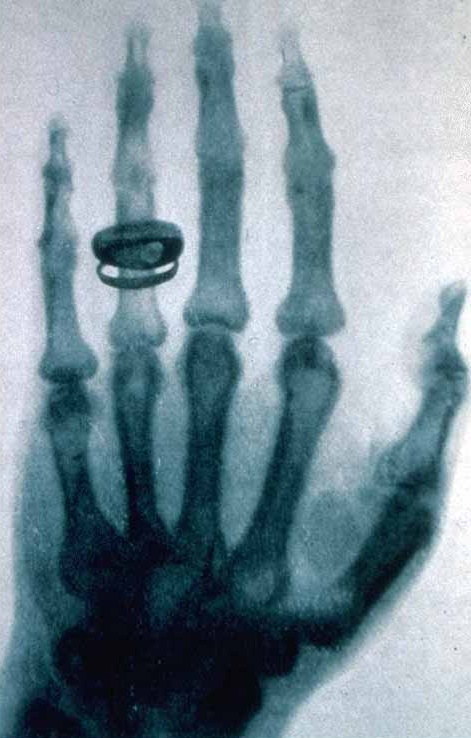Let's face it, accidents happen ...
1. Velcro
Following a walk with his dog, Swiss engineer George de Mestral noticed seeds of burdock stuck to his clothes. Upon microscopic examination, he noticed that the "hooks" of the seeds would stick to anything with a loop – thus the invention of the two-way material.
Velcro: popular among 3-year old children and middle-aged men (… shunned by fashionistas) since 1941.
2. X-rays
In 1895, German physicist Wilhelm Röntgen was playing with a tube of cathode rays (which are used in everything from TVs to florescent lights these days). He encased the tube in a black box, darkened his lab and then switched on the tube.
To Wilhelm's surprise, a photographic plate covered in barium platinocyanide began to glow from across the room. He decided to name the unknown radiation, X-ray.
Upon further inspection he found that he could use this process to photograph the inside of our bodies. Using his wife as a scientific guinea pig, he captured an X-ray of her hand.

3. Safety Glass
After a glass beaker slipped from his hands, Edouard Benedictus was surprised to see the broken glass relatively still stuck together.
He learned that the beaker originally held a solution of cellulose nitrate (a liquid plastic) which evaporated and left a coating of plastic on the interior of the beaker, essentially keeping the glass "laminated" together rather than shattering everywhere.
4. Penicillin
In 1928, Alexander Fleming went on a month-long holiday and inadvertently left cultures of bacteria out in his lab (rookie mistake).
Upon his return, he noticed one culture had developed mold and that the mold had destroyed all the bacteria colonies surrounding it. After growing the mold separately, he found that it formed "mold juice," which would go on to kill a number of disease-causing bacteria.
5. Viagra
In the early 1990s, a pharmaceutical company was attempting to make a pill that would ease angina, a painful heart condition where not enough oxygenated blood is circulated to the heart.
Once testing began, results showed trial patients reporting a side-effect of increased blood flow a lot lower than the heart area …
6. Dynamite
In the mid-1800s, chemist Alfred Nobel (yes, Mr. Nobel Prize) was working in his nitroglycerin factory attempting to make his formula more stable as it was known to explode without warning.
After accidently dropping a vile of it into some sawdust on the floor and realizing he was still alive – he recognized that mixing nitroglycerine with an inert substance could make it more stable, eventually leading to "sticks" of dynamite.
7. The Big Bang
In the 1960s, astronomers Arno Penzias and Robert Wilson used the Holmdel Horn Antenna (which was originally developed by Bell Labs for satellite communications) to track signals from the Milky Way. Yet, all they could hear was a constant hum, no matter which way they aimed the antenna.
Turns out the noise was lingering cosmic microwaves from the Big Bang, and Arno and Robert ended up with a Nobel Prize for their discoveries. Arno, Robert and Bell Labs will celebrate the 50th anniversary of their discovery on May 20, 2014.

